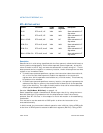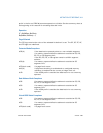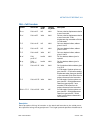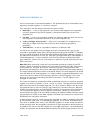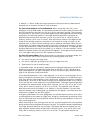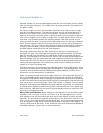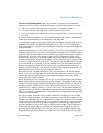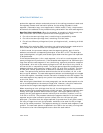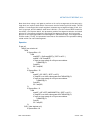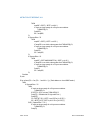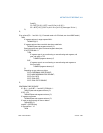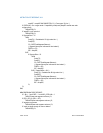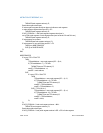
Vol. 2A 3-91
INSTRUCTION SET REFERENCE, A-M
CALL—Call Procedure
Far Calls in Compatibility Mode. When the processor is operating in compatibility
mode, the CALL instruction can be used to perform the following types of far calls:
• Far call to the same privilege level, remaining in compatibility mode
• Far call to the same privilege level, transitioning to 64-bit mode
• Far call to a different privilege level (inter-privilege level call), transitioning to 64-
bit mode
Note that a CALL instruction can not be used to cause a task switch in compatibility
mode since task switches are not supported in IA-32e mode.
In compatibility mode, the processor always uses the segment selector part of the far
address to access the corresponding descriptor in the GDT or LDT. The descriptor
type (code segment, call gate) and access rights determine the type of call operation
to be performed.
If the selected descriptor is for a code segment, a far call to a code segment at the
same privilege level is performed. (If the selected code segment is at a different priv-
ilege level and the code segment is non-conforming, a general-protection exception
is generated.) A far call to the same privilege level in compatibility mode is very
similar to one carried out in protected mode. The target operand specifies an abso-
lute far address either directly with a pointer (ptr16:16 or ptr16:32) or indirectly with
a memory location (m16:16 or m16:32). The operand-size attribute determines the
size of the offset (16 or 32 bits) in the far address. The new code segment selector
and its descriptor are loaded into CS register and the offset from the instruction is
loaded into the EIP register. The difference is that 64-bit mode may be entered. This
specified by the L bit in the new code segment descriptor.
Note that a 64-bit call gate (described in the next paragraph) can also be used to
perform a far call to a code segment at the same privilege level. However, using this
mechanism requires that the target code segment descriptor have the L bit set,
causing an entry to 64-bit mode.
When executing an inter-privilege-level far call, the code segment for the procedure
being called must be accessed through a 64-bit call gate. The segment selector spec-
ified by the target operand identifies the call gate. The target operand can specify the
call gate segment selector either directly with a pointer (ptr16:16 or ptr16:32) or
indirectly with a memory location (m16:16 or m16:32). The processor obtains the
segment selector for the new code segment and the new instruction pointer (offset)
from the 16-byte call gate descriptor. (The offset from the target operand is ignored
when a call gate is used.)
On inter-privilege-level calls, the processor switches to the stack for the privilege
level of the called procedure. The segment selector for the new stack segment is set
to NULL. The new stack pointer is specified in the TSS for the currently running task.
The branch to the new code segment occurs after the stack switch. (Note that when
using a call gate to perform a far call to a segment at the same privilege level, an
implicit stack switch occurs as a result of entering 64-bit mode. The SS selector is
unchanged, but stack segment accesses use a segment base of 0x0, the limit is
ignored, and the default stack size is 64-bits. The full value of RSP is used for the
offset, of which the upper 32-bits are undefined.) On the new stack, the processor




